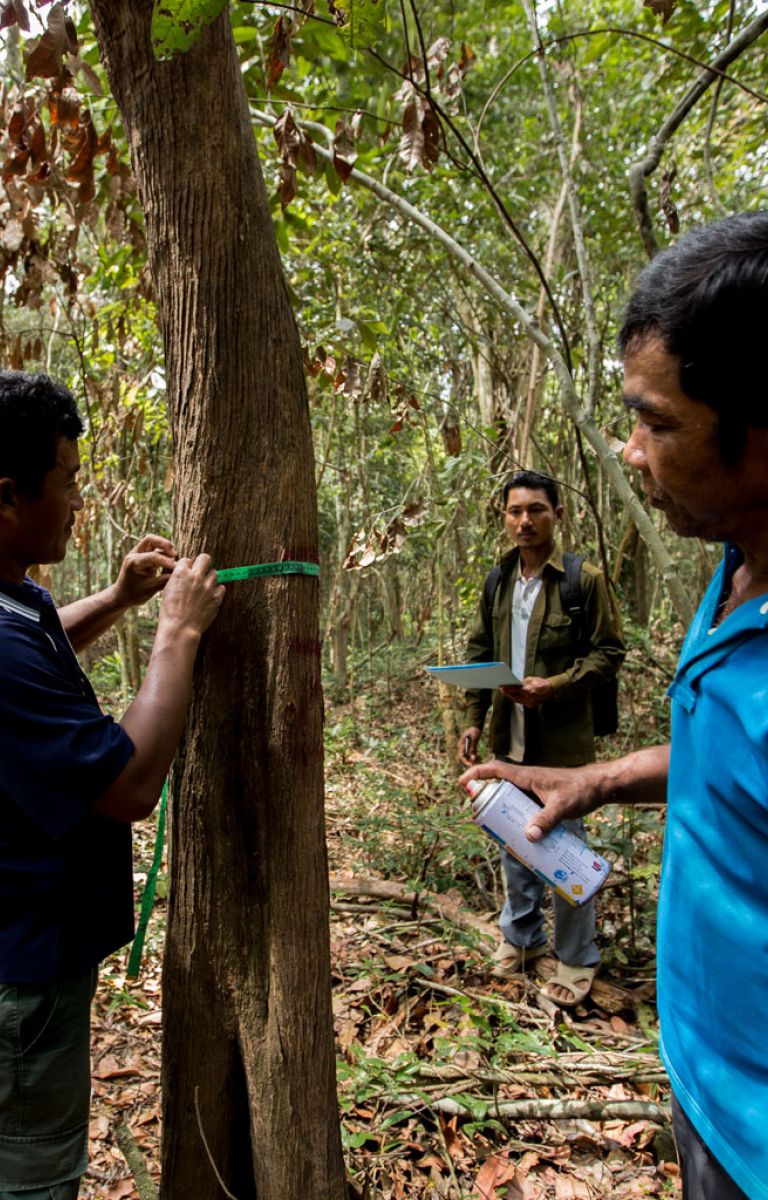

- Agreement at COP26 on the Paris Rulebook for Article 6 of the Paris Agreement has clarified the way forward for compliance and voluntary carbon markets.
- REDD+ will be able to support the development of future offsets under Article 6, but activities will need to meet the requirements set out under the agreed Paris Rulebook.
- In parallel, countries in the region have growing interest in developing domestic carbon markets.
REDD+ is an initiative designed to compensate countries for the carbon stored in their forests through payments for reducing deforestation and forest degradation and increasing forest cover. Although COP26 did not fundamentally change the prospects for REDD+, it had positive effects in areas needed for it to succeed.
Pledges of climate financing from states and the private sector bode well for REDD+, as do the commitments that countries have made in their Nationally Determined Contributions to reduce emissions in the land-use sector.
Declarations and launches on the periphery of the COP26 negotiations served to bolster the momentum behind REDD+. These include the Leaders’ Declaration on Forests and Land Use, the US$1.7 billion funding commitment to Indigenous Peoples and local communities, the earmarking of climate finance specific to the region from countries such as the United Kingdom and events related to the LEAF Coalition and the Peoples Forests Partnership, among others.
Necessary and much anticipated progress also took place within the COP26 negotiations. At long last, parties finalized the Paris Rulebook and largely resolved the outstanding issues under Article 6 of the Paris Agreement.
The agreed text under Article 6 established a market mechanism for carbon trading under the UNFCCC. This is positive in the context of REDD+ in that it advances shared goals. REDD+ has so far made limited progress in reducing deforestation. The experts said that this is because it has not been sufficiently implemented—rather than because of intrinsic shortcomings. It is notable that annual transactions in the voluntary carbon market exceeded US$1 billion for the first time in 2021. This shows there is increasing confidence that carbon credits, including from the land-use sector, will have an important role in tackling the global climate crisis.

“There is an increase in expectations regarding REDD+ coming out of COP26. The reason behind this is that the completion of the Paris Rulebook, and Article 6 in particular, can incentivize the implementation of REDD+.” — Suchitra Changtragoon, independent expert on nature conservation, Thailand
The success of REDD+ will depend on several factors. For example, how keen are the forest countries to make the policy and regulatory changes that are needed to provide the enabling environment that REDD+ requires to be effective? In addition to having the global architecture in place in the Paris Rulebook, there is still significant work to do at the national level. The effectiveness of REDD+ in underpinning future offsets will be a function of how quickly countries can have a national system in place.
Another trend that the experts see as positive is that some countries in the region, such as Indonesia, Thailand and Viet Nam, are exploring domestic carbon markets. They said that countries should prioritize meeting their own emissions reduction targets, including through domestic markets, and that domestic demand for carbon credits could become an important future source of funding for emissions reductions in the land-use sector.
Finally, early movers able to quickly ready themselves for Article 6 will be positioned to gain advantages in the long term. The experts cited examples of countries in the Latin America and the Caribbean region reacting quickly to opportunities under the Kyoto Protocol’s Clean Development Mechanism and being able to seize available interest in compliance offsets.
“COP26 overcame many questions surrounding prospects for REDD+ to make emissions reduction contributions and signalled growing trust in the initiative among countries. The inclusion of REDD+ in Article 6 itself is a very big outcome. Whether it really makes a big difference is still to be seen.” — Till Neeff, Carbon Finance Specialist, REDD+, FAO
